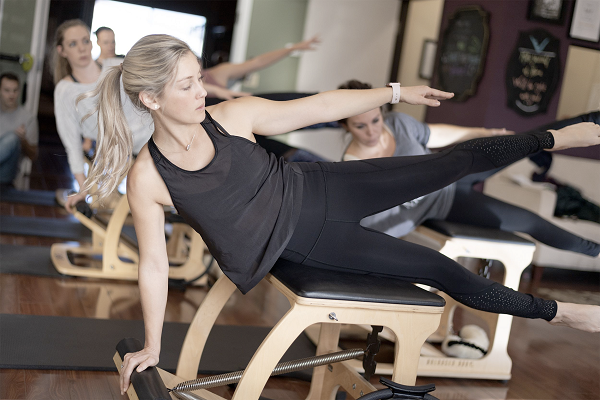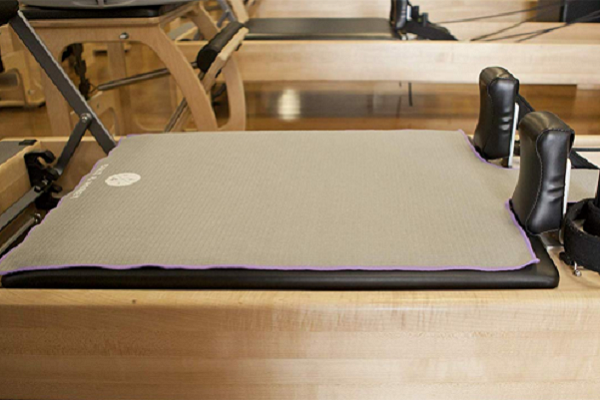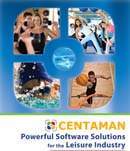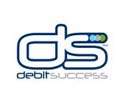Chris Skinner, Managing Director of leading equipment supplier HF Industries, believes that the operation of exercise facilities through and after the Coronavirus pandemic demands a new approach.
In a feature, The Way Forward, in the latest issue of Australasian Leisure Management he writes:
If you think we are on the right side of the Coronavirus pandemic, then think again.
While restrictions are starting to ease and life is moving towards some normality, the ‘normal’ that we were accustomed to is now in the past, and the ‘new normal’ will be one that sees us all adjust in a number of ways.
One example - the simple greeting of two people with a handshake, kiss or hug - now brings a sense of concern to both parties.
Such anxiety, trepidation and fear are all now bestowed into every person around the world.
Plagues and epidemics have ravaged humanity throughout its existence, often changing the course of history, with Spanish flu, Asian flu, AIDS, Swine Flu, Ebola and Zika among those the world has faced in the last 100 years.
COVID-19, just like influenza and the common cold is here to stay and like all the others it will take a drug to ease such tensions.
However, with finding a vaccine and treatments for COVID-19 being sometime in the future, it is up to each of us to adjust as we have with all other epidemics to survive not only with regards to our health but our welfare as well.
What will such apprehension have on our industry and how do we adjust to survive?
Facilities at the Crossroads
Firstly, we must weigh up if it is possible to survive with the restriction and conditions that are placed on the reopening of aquatic and recreation centres and fitness clubs and how that may differ state to state.
For council aquatic and recreation centres, their role is to provide a service to members and ratepayers while for fitness clubs - it is their livelihood.
In the simplest terms, social distancing although eased will still apply, whether forced or through each individual’s personal preference and it is this one sole fact that will determine how many can attend a class and if it will be worth holding.
This alone will have a significant impact on how many can attend one class, be it any form of group exercise or with regards to the general use of equipment in the facility.

The correct/recommended distance is also subjective as one person’s distance might not be acceptable to another.
Hygiene is also a major concern. How many times can you clean a machine down after each patron has used it and will it have been cleaned enough to satisfy the next user?
These are all no-win situations, so how do we reduce the odds and still provide the service all our patrons want?
Let’s focus on the areas that can provide the greatest returns.
Group Exercise
This form of exercise involves patrons working out together in an allocated provided space where all that is required is a tailoring of an area within the facility to suit our current circumstances.
What’s wrong with Aerobics? I hear you laughing, but all many patrons want is to move, have fun, some enjoyment and a sense of achievement when they leave.
Classes could rotate every 45 minutes - and there is nothing to clean, nothing to disinfect or spray - just everyone keeping their distance.
As a reminder- it was Aerobics that started the movement of group exercise as we know it.
How many of you have The Original Step stored away?
For those who don’t remember or are too young to know, the Original Step is a platform and four blocks that can be placed the appropriate distance apart from each patron.
Again - with the same floor space required as above and with no cleaning, spraying or disinfecting classes can rotate every 45 minutes.
Using one piece of equipment for the duration of a patron’s visit
Let’s consider Pilates from the simple mat classes to those adding a versatile resistance training apparatus such as an Ultra Lite circle.
Attendees can bring their own mats and/or Ultra Lite circles to each class.
For those patrons who arrive without equipment, facilities can sell them mats and Ultra Lites - then they are the only ones using them.
MOTR classes
Balanced Body’s MOTR (MOre Than a Roller), is a complete gym in a manageable one metre cylinder. It combines a foam roller with the challenge of three levels of resistance, easily adjusted with the click of a button.
MOTR offers a simple form of resistance exercise that is new and performed on the same floor area.
Reformer classes
The Reformer is one of the only pieces of equipment in the club that a person uses for the complete duration of their group exercise program.
So, if spaced accordingly provides the perfect program.
Like in Yoga or Pilates Mat Classes, patrons can bring their own mat (often referred to as a ‘Salt and Honey’ Pilates towel) that covers a reformer and which can simply be taken home washed and brought to their next class thereby alleviating many of the problems we are now facing with hygiene and sanitisation.

In addition, Balanced Body, a leading manufacturer of Pilates equipment, are now making PVC Single and Double Loops that can be fitted to all their reformers. A couple of sets of these for each reformer means that a set could be changed on each reformer after each class with the used ones washed and ready for the next change over.
These two simple additions would mean that reformer classes could operate back to back from the floor space they utilise while allaying patrons’ concerns.
Weights area
Most facilities today have between 10 and 20 single fixed movement pieces of equipment including strength machines such as a chest, shoulder and leg presses.
One of the main concerns over using these types of equipment is that clients tend to continually move from one to the other doing 10 reps rotating from Upper Body to Lower Body.
The best scenario would be to have machines such as the FreeMotion Cable Column or the FreeMotion Dual Cable Cross that are multi-functional so that one person could do their whole program on the one machine either as part of a group exercise or an individual program.
The Cable Column has a small stack 50lbs in 2.5lbs increments and is on lock down castors so can be positioned on a floor space to set up group classes. The Dual Cable Cross could be considered as the best functional machine on the market for 20 years.
If you have either of these units you just need to set programs for clients to work to for 30 to 40 minutes. If fitted with the Sports Trak Handles these could be exchanged with every client for hygiene.
Another advantage of these units is that everyone is standing up and with no-one sitting down I’m sure trainers can work through the benefits of this with every patron.
These are not the only machines to consider, wall pulleys for example would also work well.
During these times of COVID restrictions and a heightened awareness of hygiene, it is time for the fitness industry to think outside the box, and I’d suggest that exercisers use one machine per session.
Cardio Area
The benefit of this area during the current times is that if people choose to stay on their selected cardio machine such as the treadmill, rower or bike for the duration of their workout, then cleaning of equipment will only be required when they are finished at the end of a 30 to 45 minute session.
During this time options for cardio classes might include one person being allotted a treadmill and a rower, facing each other and a class set out between the two machines. So, if you have
10 treadmills and 10 rowers or bikes, you have classes of 10 people every 40 minutes and charge accordingly.
This would then also mean only cleaning down machines every 45 minutes.
To reinforce social distancing for facilities with rows of cardio equipment, where I’m aware that some clubs are moving machines further apart or even removing every second treadmill, I’d suggest allocating users to every second treadmill for their allocated time while the alternate machines are turned off and cleaned.
At the end of one session, the alternate equipment is then turned back on and the process reversed.
Where in some facilities, the patrons either use the cardio equipment to ‘warm up’ before a strength session or choose to alternate between cardio and strength equipment, then the facility should supply the patron with a means to disinfect the equipment after each time it is used - such as a spray bottle of disinfectant and a small cloth.
Patrons must accept that their training time needs to accommodate these cleaning processes.
We all need to consider what our facilities have and determine what we must do differently to create the best situation for our clients, patrons and ourselves.
Click here to contact HF Industries via their entry in the Australasian Leisure Management Supplier Directory.
Click here to view and subscribe to issues of Australasian Leisure Management.
Images: Balanced Body Reformer (top), the Exochair (middle) and the ‘Salt and Honey’ Pilates towel (below).
About the author
Chris Skinner
Managing Director, HF Industries
Chris Skinner is the widely respected Managing Director of leading fitness supplier HF Industries.
His 40 plus years of achievement in supplying the fitness industry was profiled in Australasian Leisure Management issue 138.
Earlier this year (2020) his book Everest and Beyond - The Himalayas by Bike was published, charting a motorcycle journey he and a group of friends undertook from the Nepalese capital of Kathmandu to the city of Lhasa, capital of the Chinese region of Tibet.
Click here to contact HF Industries via their entry in the Australasian Leisure Management Supplier Directory.
Read more from this author
Related Articles
9th August 2020 - Gym owner calls for online protest over new NSW fitness club regulations
7th August 2020 - Fitness First introduces attendee temperature checks at NSW clubs
31st July 2020 - FILEX to return as organisers commit to future fitness trade show
19th July 2020 - Without JobKeeper 60% of Australian fitness businesses will close in less than a month
15th June 2020 - Fitness Australia calls for national consistency in state government gym reopenings
14th June 2020 - Australian Institute of Fitness’ Steve Pettit says industry ‘will never look the same as it did pre COVID-19’
5th June 2020 - HF Industries’ Chris Skinner publishes account of Himalayan motorcycle expedition
29th May 2020 - Fitness Australia releases Checklist to ensure gyms offer safe environments when reopening
26th January 2020 - Balanced Body’s five decades as an agent of healthy change
6th November 2014 - FreeMotion Fitness introduces new Tour de France Bike
17th June 2014 - HF Industries release Pilates for Fitness Facilities publication
20th July 2010 - HF Industries add to their Balanced Body Pilates products
14th May 2010 - HF Industries named exclusive distributor for FitWall
24th September 2009 - FreeMotion Launches new Cardio Range
Support our industry news service
We hope that you value the news that we publish so while you're here can we ask for your support?
As an independent publisher, we need reader support for our industry news gathering so ask that - if you don't already do so - you back us by subscribing to the printed Australasian Leisure Management magazine and/or our online news.
















